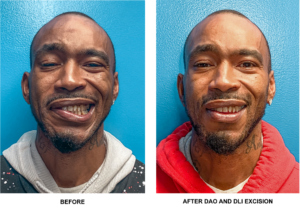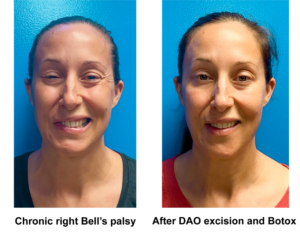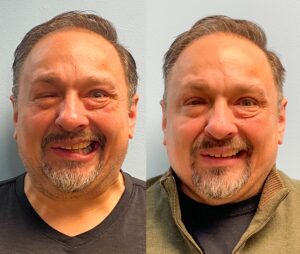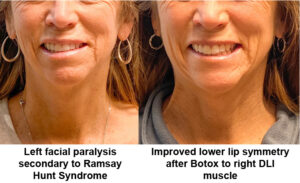Depressor labii inferioris (DLI) excision
The depressor labii inferioris (DLI) muscles move the lower lip downward to show the bottom teeth during smiling. Often, patients with facial paralysis have too much activity in this muscle on the unaffected side of their face. This hyperactivity creates a lower lip asymmetry when patients smile and talk, since the healthy side lower lip moves down but the side with paralysis does not. By weakening the healthy DLI muscle, we improve facial symmetry when patients smile, talk, and make other expressions. There are two ways we can weaken the DLI muscle:
- Inject Botox to temporarily weaken the muscle (typically lasts 3-6 months)
- Surgically remove the muscle to provide permanent lower lip symmetry
What to expect during DLI Excision procedure:
Surgical resection of the DLI muscle is typically performed in clinic under local anesthesia. A small incision is made inside the mouth (this is a scarless surgery) and the entire procedure takes 20-30. There are very few risks with the procedure.
After the procedure, patients can eat and drink normally once the numbing medication wears off (about an hour). The final effect of the DLI resection can be appreciated almost immediately once the swelling has gone down (usually only a few days of swelling).
If you would like to schedule a consultation at the UNC Facial Nerve Center, please call 984-974-2255.



